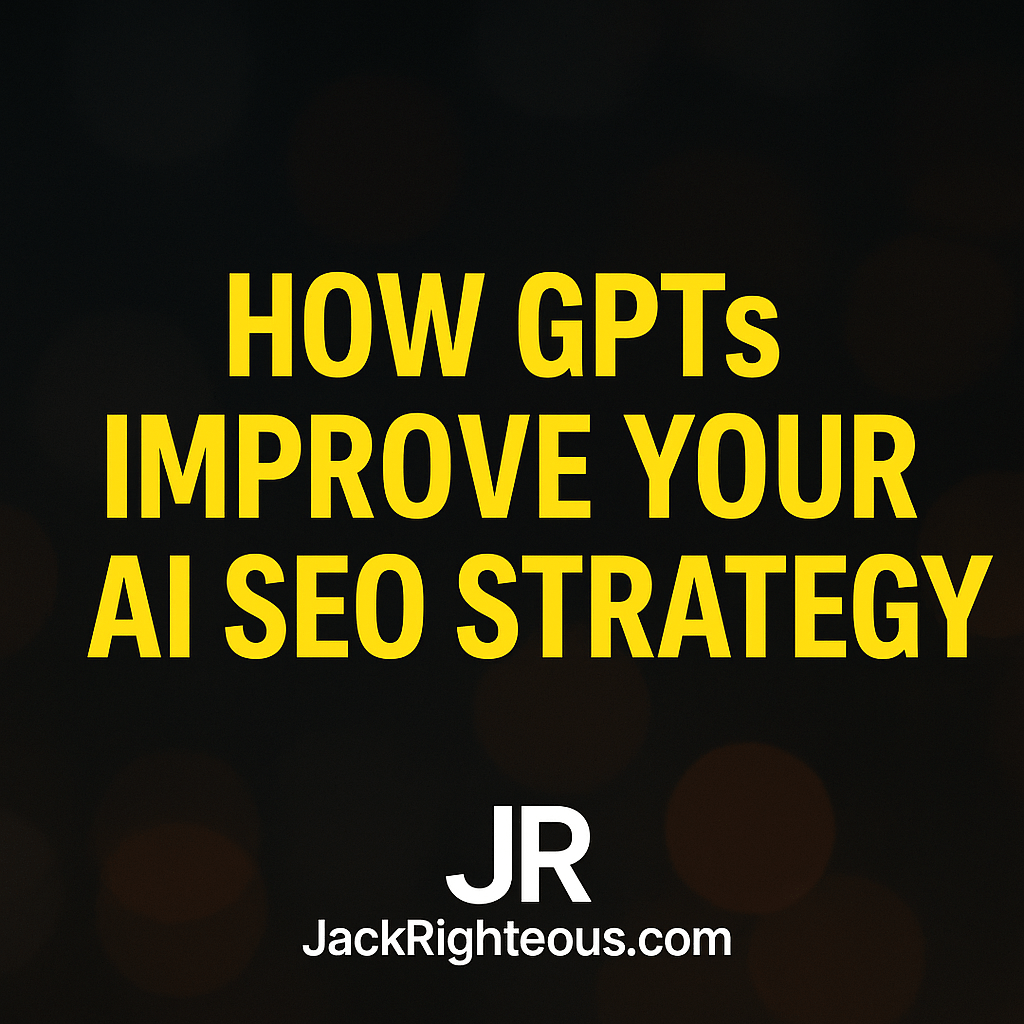
How GPTs Improve Your AI SEO Strategy
Gary WhittakerHow GPTs Power Your AI SEO Strategy (With Real Creator Examples)
A Custom GPT Is More Than a Tool — It’s an SEO Engine You Might Be Ignoring
You’ve built your GPT. Maybe two or three.
They’re trained, useful, and even public.
But here’s what most creators still miss:
Your GPT is an asset that can build your AI SEO footprint — and the earlier you treat it like one, the faster your authority compounds.
If you want more people to discover your tools, your mission, and your systems organically — this is how.
🔍 What Is AI SEO?
AI SEO means using content, tools, and systems that:
- Solve real problems
- Signal expertise to search engines
- Improve discoverability across search, social, and AI-generated results
Unlike old SEO, AI SEO rewards:
- Structured, topic-driven content
- Authentic language that sounds human, not robotic
- Interconnected resources (like GPTs + guides + use cases
And that’s where your GPTs come in.
How GPTs Contribute to Your SEO Stack
Here are 5 ways a GPT can boost your SEO without “trying” to be SEO:
✅ 1. GPTs Create Natural Topic Clusters
If your GPT helps people with songwriting, content planning, or brand identity — you now have a core topic.
Use it to create:
- Blog articles
- How-to guides
- Landing pages
- Case studies
- Video walk-throughs
📈 All of this tells Google:
“This person owns this space.”
✅ 2. GPTs Build Engagement Time (Dwell Time)
When someone hits your page and clicks into your GPT, plays with it, and sticks around for 3+ minutes?
That’s golden.
- Lower bounce rate
- Higher time-on-site
- Increased trust signals
GPTs don’t just deliver content.
They deliver experience — and Google tracks that.
✅ 3. GPTs Generate High-Quality Internal Links
Each GPT supports a theme.
Link it from:
- Your blog
- Your product pages
- Your creator education hubs
These internal links help:
- Spread authority site-wide
- Keep users flowing through your system
- Improve site architecture (Google loves structure)
✅ 4. GPTs Increase Shareability and Backlink Potential
If your GPT solves a unique problem — like refining lyrics for Suno, or planning content as a part-time creator — it’s linkable.
When you give people tools they want to return to or recommend, you’re not just building engagement.
You’re building organic backlinks — one of the strongest SEO signals there is.
✅ 5. GPTs Let You Own Branded Search
When someone Googles:
- "JR Righteous Lyrics Lab"
- "Jack Righteous content strategy GPT"
- "Brand identity GPT for creators"
You want your site, your blog, and your landing pages to appear.
Branded queries are:
- Easy to rank for
- High-conversion
- Proof that you’re gaining traction
Real Examples from My GPT System
Here’s how I’ve connected GPTs into my AI SEO strategy:
| GPT | Primary Topic | Supporting Content |
|---|---|---|
| 🧱 JR Brand Identity Architect | Creator identity, brand voice | Blog articles, landing pages, Notion guides |
| ✍🏽 JR Righteous Lyrics Lab | AI lyric writing, emotional storytelling | Suno tutorials, creator journey posts, lyrical formatting tips |
| 🗓️ JR Content Strategy Planner | Sustainable content creation | Weekly planning guides, part-time creator systems, email CTA breakdowns |
Each one is supported by:
- Landing pages
- Blog posts
- Internal links across my site
- Social content and email drops
How to Add SEO Weight to Your GPT Stack
Here’s a simple framework:
- Create a landing page per GPT
- Write 1–2 long-form guides per GPT topic
- Link those pages together
- Mention and link your GPTs in relevant blog posts
- Promote organically (Reddit, Twitter, groups, etc.)
Bonus: Add
SoftwareApplicationorToolschema to your landing pages to help Google understand them.
You Don’t Need 10 GPTs. You Need 1 That’s Structured.
Focus on:
- One niche
- One real problem
- One system you can explain and support with content
Then build a GPT around it.
Support it with a page.
Link it with content.
And give Google the structure it’s hungry for.
This Is Part 5 of the Custom GPT Series
- Part 1: Why Creators Should Build a Custom GPT
- Part 2: What Are GPT Knowledge Files?
- Part 3: When to Make Your GPT Public vs Private
- Part 4: Connect Your GPT to a Business System
- You are here → Part 5
Ready to Launch or Level Up Your AI Music Journey?
🔹 Start Here – The Suno AI Creator Guide:
https://jackrighteous.com/pages/suno-guide-getting-started
🔹 Learn to Brand with Sound – GET JACKED Into Suno Branding:
https://jackrighteous.com/pages/start-ai-music-branding
🔹 Unlock the Full Anthem Path – GET RIGHTEOUS System Access:
https://jackrighteous.com/pages/get-righteous-anthem-guide
(Requires one of the following:
– https://jackrighteous.com/products/get-jacked-full-pro-kit
– https://jackrighteous.com/products/get-jacked-pro-ai-music-kit
– https://jackrighteous.com/products/sanctuary-digital-download-support-the-album-build)

